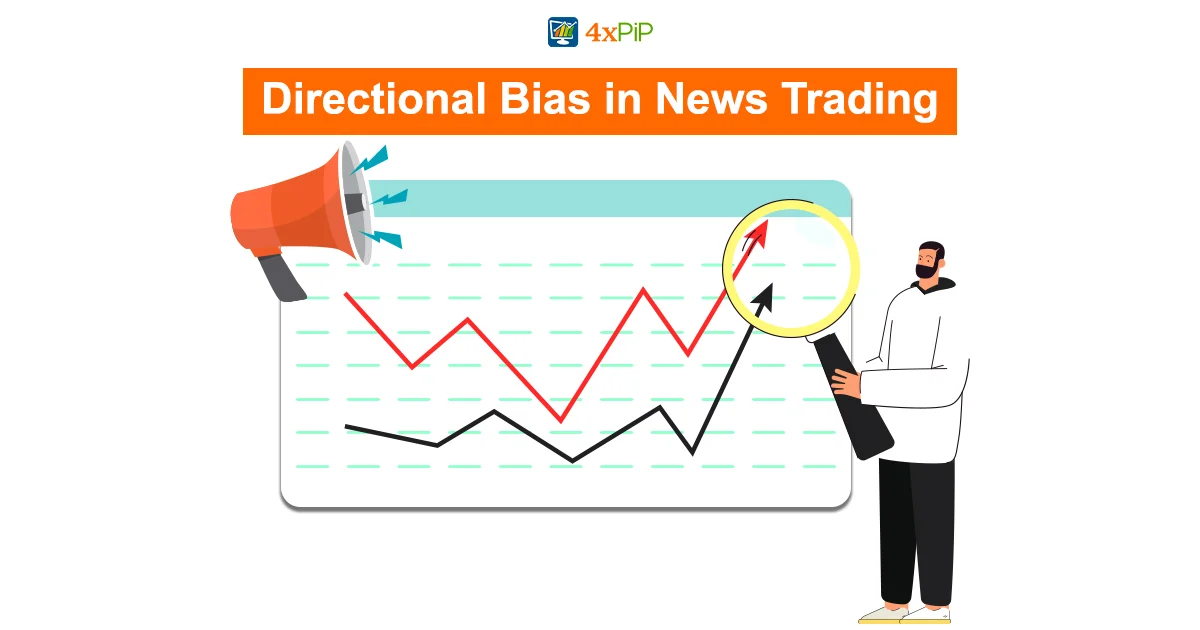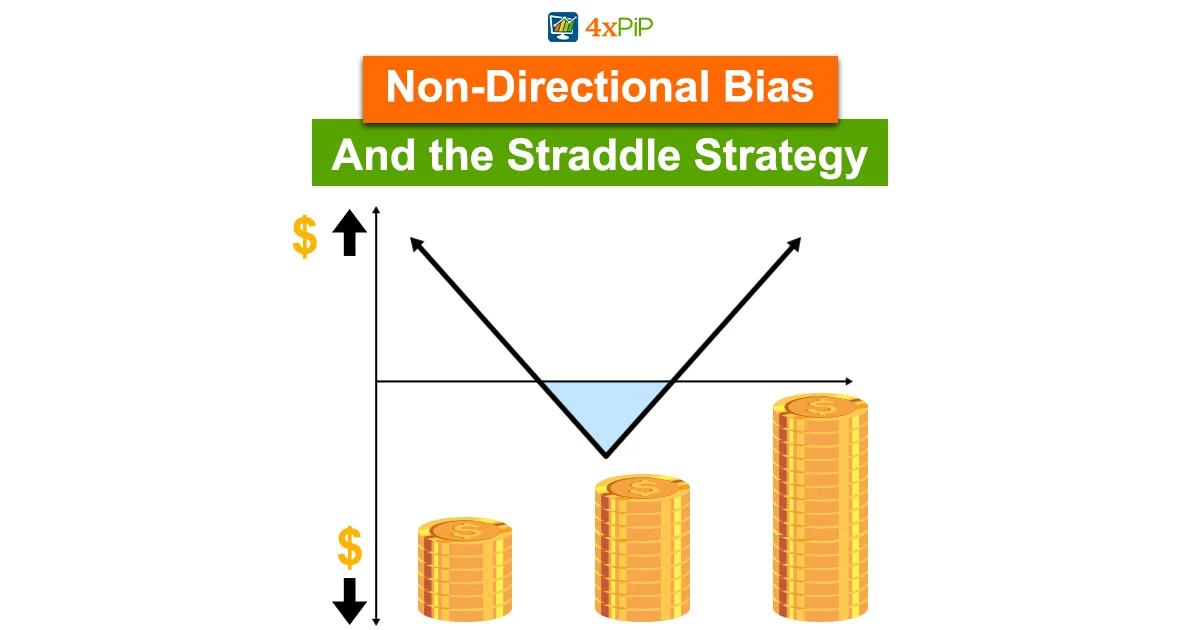In the dynamic world of forex trading, news plays a crucial role, often catalyzing market movements. Understanding what news means in forex is essential for traders looking to make informed decisions and capitalize on market opportunities. News in forex encompasses a spectrum of information, from economic indicators and interest rates to geopolitical events, all of which can significantly influence currency pairs’ values. As traders navigate this landscape, having access to reliable news sources becomes paramount. In this context, 4xPip stands out as a trusted platform offering valuable insights and tools for traders. Whether you’re seeking expert guidance, reliable news updates, or tools to enhance your trading strategy, 4xPip provides a comprehensive resource. Explore their offerings at 4xPip and reach out to their customer support at [email protected] for personalized assistance on your forex trading journey.
Directional Bias in News Trading:

News trading with a directional bias involves forming expectations about the market’s movement post-news release. Traders rely on a meticulous analysis of expected outcomes and the prevailing market sentiment. A foundational aspect of this strategy is a profound understanding of economic indicators influencing the forex market. Key indicators, such as GDP, inflation, unemployment, trade balance, and consumer confidence, wield significant influence. Moreover, being abreast of the market consensus for each indicator, reflecting the average expectation of analysts and economists, is vital for predicting market reactions.
To execute a directional bias effectively, traders need to anticipate potential market movements based on the deviation from the market consensus. For example, if the actual U.S. GDP growth surpasses expectations, the U.S. dollar is likely to appreciate against other currencies. This appreciation signals a stronger economy and the potential for higher interest rates, influencing traders to adjust their positions accordingly.
Additionally, traders must stay attuned to geopolitical events, central bank decisions, and other global economic factors that can significantly impact currency values. The interconnectedness of these factors requires a comprehensive approach to analysis, ensuring traders consider both immediate and long-term implications for their directional bias in news trading.
Understanding the nuances of each economic indicator and its potential impact is essential. For instance, a positive deviation in employment figures might strengthen a nation’s currency, but the same deviation in inflation could lead to concerns about overheating and prompt a different market response.
Non-Directional Bias and the Straddle Strategy:

Conversely, a non-directional bias in news trading implies a lack of clear expectations regarding market direction. Traders adopting this approach often utilize the straddle strategy. This sophisticated method involves placing both buy and sell orders on the same currency pair, each with a predefined distance from the current price. The underlying principle is to capture the breakout that follows the news release, irrespective of the market’s subsequent direction.
For instance, a trader might set a buy order 20 pips above the current price and a sell order 20 pips below. This strategy ensures profitability in the event of significant price movements in either direction post-news release. The straddle strategy is particularly effective during highly anticipated news events, where market volatility is expected.
To implement the straddle strategy effectively, traders must consider not only the distance from the current price but also the timing of their orders. Placing orders too close to the current market price may result in triggering both buy and sell orders due to minor fluctuations in the immediate aftermath of the news release. Therefore, meticulous planning, including the selection of appropriate entry points and order distances, is critical.
Additionally, traders adopting a non-directional bias need to be well-versed in risk management techniques. Given the inherent volatility following major news releases, setting appropriate stop-loss and take-profit levels is essential. Traders should carefully assess the potential impact of slippage, requotes, and execution delays, preparing for swift market movements that can influence the outcome of their straddle strategy.
Challenges and Risks in News Trading:
While news trading presents lucrative opportunities, it comes with inherent challenges and risks. The heightened volatility and rapid price movements during news events can lead to slippage, requotes, and execution delays. Additionally, wide spreads and increased commissions may diminish profit margins and escalate trading costs. Unexpected outcomes and revisions to initial news releases pose a significant risk, potentially invalidating pre-established analyses and leading to losses.
Fakeouts and whipsaws are additional challenges in news trading. These phenomena occur when the market briefly moves in one direction, triggering traders’ orders, only to reverse suddenly. Traders need to be vigilant and employ risk management strategies to mitigate the impact of such market dynamics.
Mitigating these risks requires a proactive and well-thought-out approach to risk management. Traders need to establish predetermined risk-reward ratios, implement tight stop-loss orders, and exercise discipline in adhering to their trading plans. Understanding the specific challenges associated with news trading, such as the increased probability of slippage and market gaps, empowers traders to make informed decisions amid heightened market activity.
Mitigating Risks and Challenges:
To navigate the risks and challenges associated with news trading, traders must establish a robust risk management plan. This includes setting appropriate stop-losses, take-profits, and position sizes. Having a reliable and fast news source is essential, ensuring traders receive timely information to make informed decisions. Utilizing a reputable trading platform and maintaining a fast internet connection further enhance the trader’s ability to execute orders swiftly in the volatile environment of news trading.
Practicing news trading on a demo account is a prudent step before risking real capital. This allows traders to familiarize themselves with the dynamics of news events and refine their strategies in a risk-free environment. Additionally, traders can use this opportunity to fine-tune their risk management approach, testing different scenarios and adjusting their plans based on the outcomes.
Continuous learning and adaptation are crucial elements of mitigating risks in news trading. As the market evolves and responds to various economic events, traders should stay informed about changes in market dynamics. This includes staying abreast of central bank communications, geopolitical developments, and shifts in economic indicators. Adjusting strategies based on the evolving market conditions ensures that traders are well-equipped to handle new challenges and capitalize on emerging opportunities.
Furthermore, traders should leverage technological tools and resources to enhance their risk management capabilities. Automated trading systems with built-in risk management features can help execute trades swiftly and precisely, reducing the impact of execution delays and minimizing the likelihood of slippage.
Summary:
Mastering news trading in forex requires a comprehensive understanding of economic indicators, delicate strategies, and effective risk management. Whether adopting a directional bias based on economic indicators or employing a non-directional strategy with the straddle technique, traders must navigate challenges such as market volatility, spread widening, and execution risks. For those venturing into news trading, a meticulous approach, continuous learning, and strategic practice are essential components of success.
For those seeking additional guidance and a range of trading tools, consider exploring the offerings at 4xPip. Visit their website at 4xPip or contact their customer support at [email protected] for more information and assistance. Happy trading!





